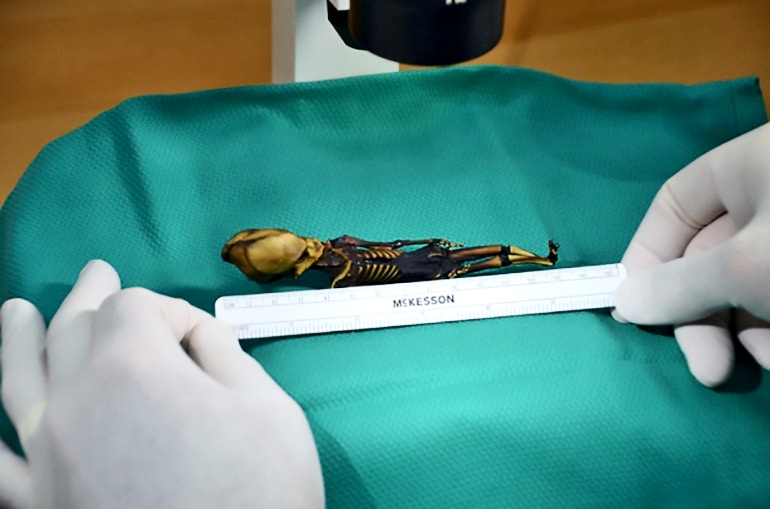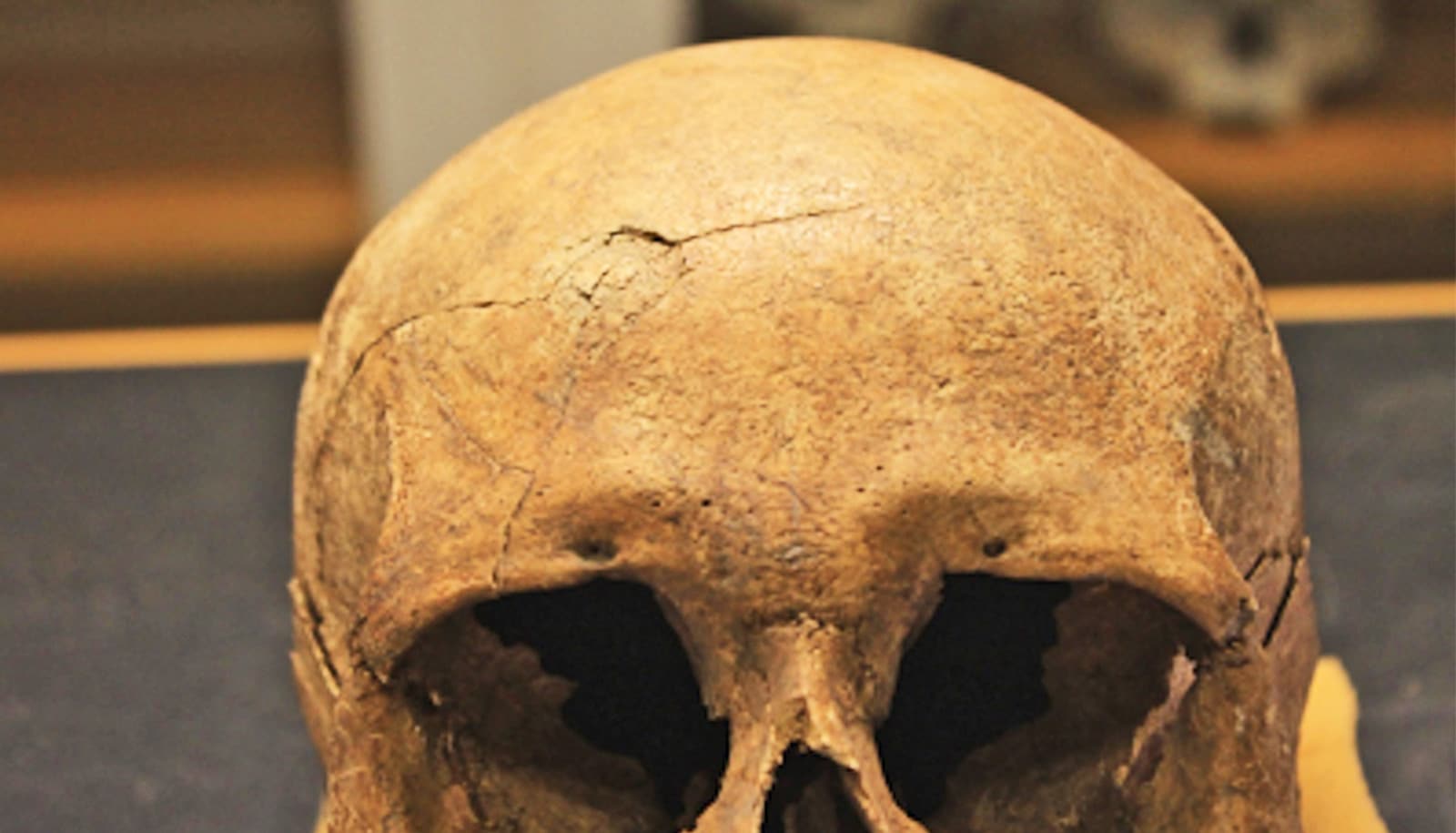New research stamps out any remaining questions about a tiny, mysterious skeleton’s home planet—it’s without a doubt human. And, more than that, the analysis answers questions about remains that have long been a genetic enigma.
After five years of deep genomic analysis, Garry Nolan, professor of microbiology and immunology at Stanford University, and Atul Butte, director of the Institute for Computational Health Sciences at the University of California, San Francisco, have pinpointed the mutations responsible for the anomalous specimen.
The researchers found mutations in not one but several genes known to govern bone development; what’s more, some of these molecular oddities have never been described before.
“To me, it seems that when doctors perform analyses for patients and their families, we’re often searching for one cause—one super-rare or unusual mutation that can explain the child’s ailment. But in this case, we’re pretty confident that multiple things went wrong,” says Butte.

It’s an indication, he says, that looking for a single mutation, or even mutations already known to cause a particular disease, can discourage researchers from looking for other potential genetic causes and, in turn, potential treatments for patients.
Mysterious remains
Scientists discovered the skeleton, nicknamed Ata, more than a decade ago in an abandoned town in the Atacama Desert of Chile. After trading hands and eventually finding a permanent home in Spain, the mummified specimen started to garner public attention.
“‘Look, whatever it is, if it’s got DNA, I can do the analysis.'”
Standing just 6 inches tall—about the length of a dollar bill—with an angular, elongated skull and sunken, slanted eye sockets, the internet began to bubble with other-worldly hullabaloo and talk of ET.
“I had heard about this specimen through a friend of mine, and I managed to get a picture of it,” Nolan says. “You can’t look at this specimen and not think it’s interesting; it’s quite dramatic. So I told my friend, ‘Look, whatever it is, if it’s got DNA, I can do the analysis.'”
With the help of Ralph Lachman, clinical professor of radiology at Stanford and an expert in a type of pediatric bone disease, Nolan set the record straight.
Their analysis points to a decisive conclusion: This was the skeleton of a human female, likely a fetus, that had suffered severe genetic mutations. In addition, Nolan saw that Ata, though most likely a fetus, had the bone composition of a six-year-old, an indication that she had a rare, bone-aging disorder.
To understand the genetic underpinnings of Ata’s physicality, Nolan turned to Butte for help in genomic evaluation. He accepted the challenge, running a work-up so comprehensive it nearly rose to the level of patient care. Butte notes that some people might wonder about the point of such in-depth analyses.
“We thought this would be an interesting exercise in applying the tools that we have today to really see what we could find,” he says. “The phenotype, the symptoms, and size of this girl were extremely unusual, and analyzing these kinds of really puzzling, old samples teaches us better how to analyze the DNA of kids today under current conditions.”
DNA rundown
To understand the genetic drivers at play, Butte and Nolan extracted a small DNA sample from Ata’s ribs and sequenced the entire genome. The skeleton is approximately 40 years old, so its DNA is modern and still relatively intact. Moreover, data collected from whole-genome sequencing showed that Ata’s molecular composition aligned with that of a human genome.
Two amazing fossil skeletons belong to new lizard
Nolan notes that 8 percent of the DNA was unmatchable with human DNA, but that was due to a degraded sample, not extraterrestrial biology. (Later, a more sophisticated analysis was able to match up to 98 percent of the DNA, according to Nolan.)
“For me, what really came of this study was the idea that we shouldn’t stop investigating when we find one gene that might explain a symptom.”
The genomic results confirmed Ata’s Chilean descent and turned up a slew of mutations in seven genes that separately or in combinations contribute to various bone deformities, facial malformations, or skeletal dysplasia, more commonly known as dwarfism. Some of these mutations, though found in genes already known to cause disease, had never before been associated with bone growth or developmental disorders.
Knowing these new mutational variants could be useful, Nolan says, because they add to the repository of known mutations to look for in humans with these kinds of bone or physical disorders.
“For me, what really came of this study was the idea that we shouldn’t stop investigating when we find one gene that might explain a symptom. It could be multiple things going wrong, and it’s worth getting a full explanation, especially as we head closer and closer to gene therapy,” Butte says. “We could presumably one day fix some of these disorders, and we’re going to want to make sure that if there’s one mutation, we know that—but if there’s more than one, we know that too.”
3D scans explore baby Tasmanian tigers too rare to dissect
Nolan and Butte are senior authors of the study, which appears in Genome Research.
Additional authors of the study are from Stanford; UC San Francisco; Roche Sequencing Solutions; National Autonomous University of Mexico; and Ultra Intelligence Corporation.
Support for the study came from the Lucile Packard Foundation for Children’s Health, UCSF endowment funds, the Human Frontier Science Program, and Stanford.
Source: Hanae Armitage for Stanford University



